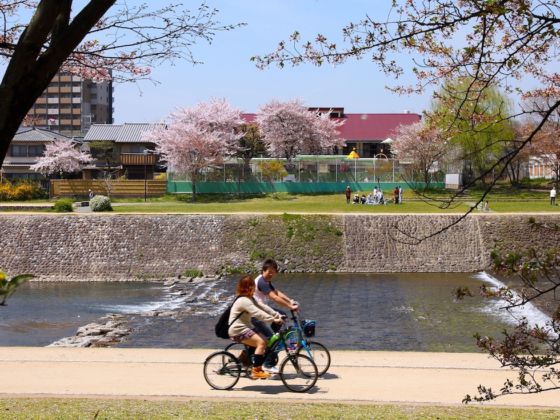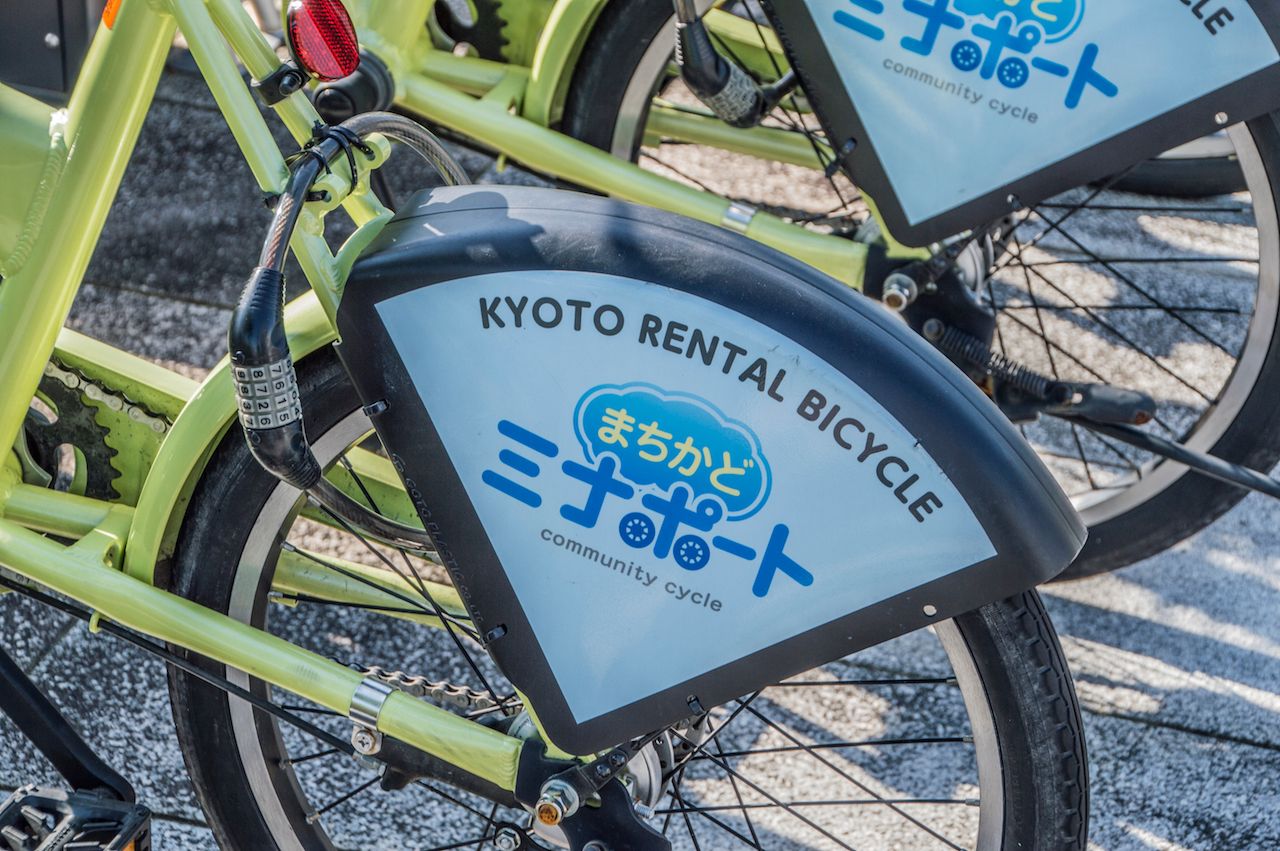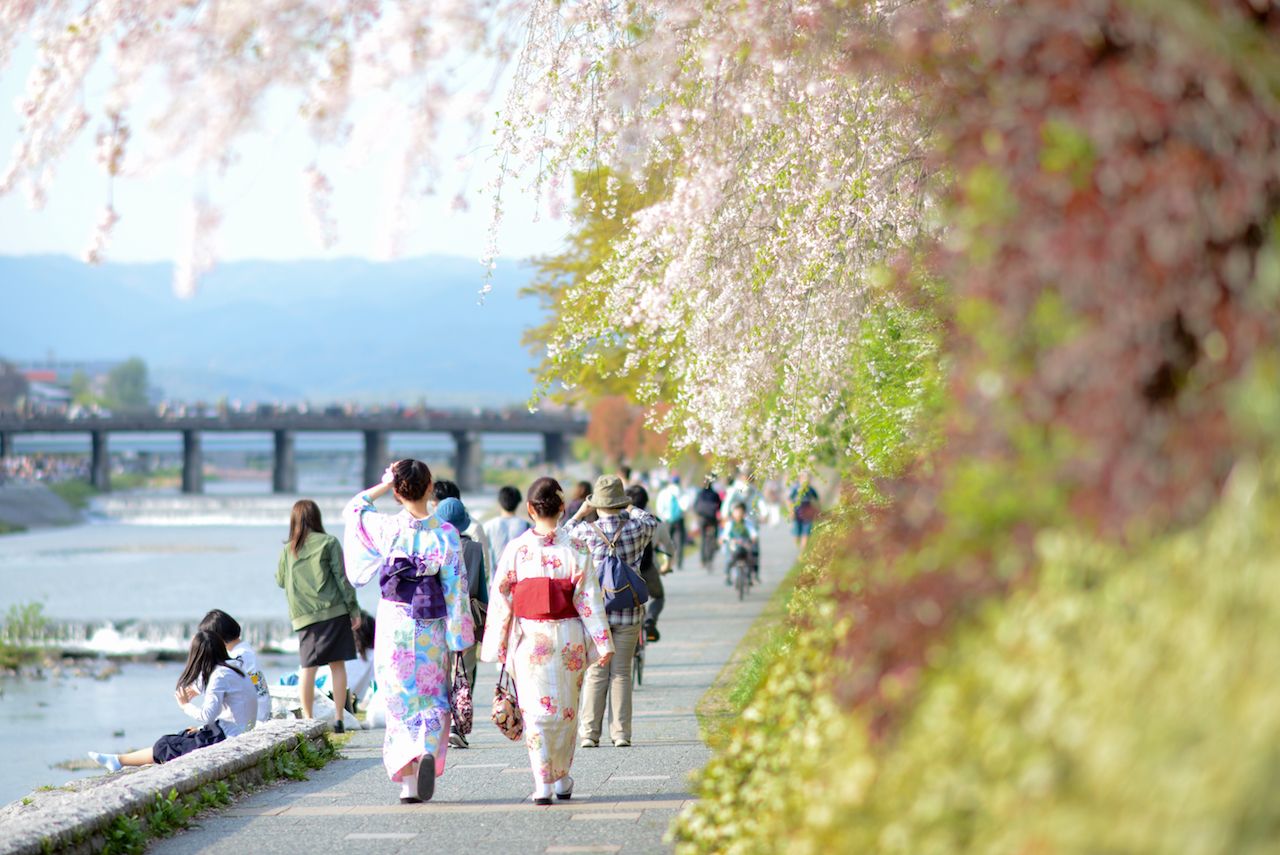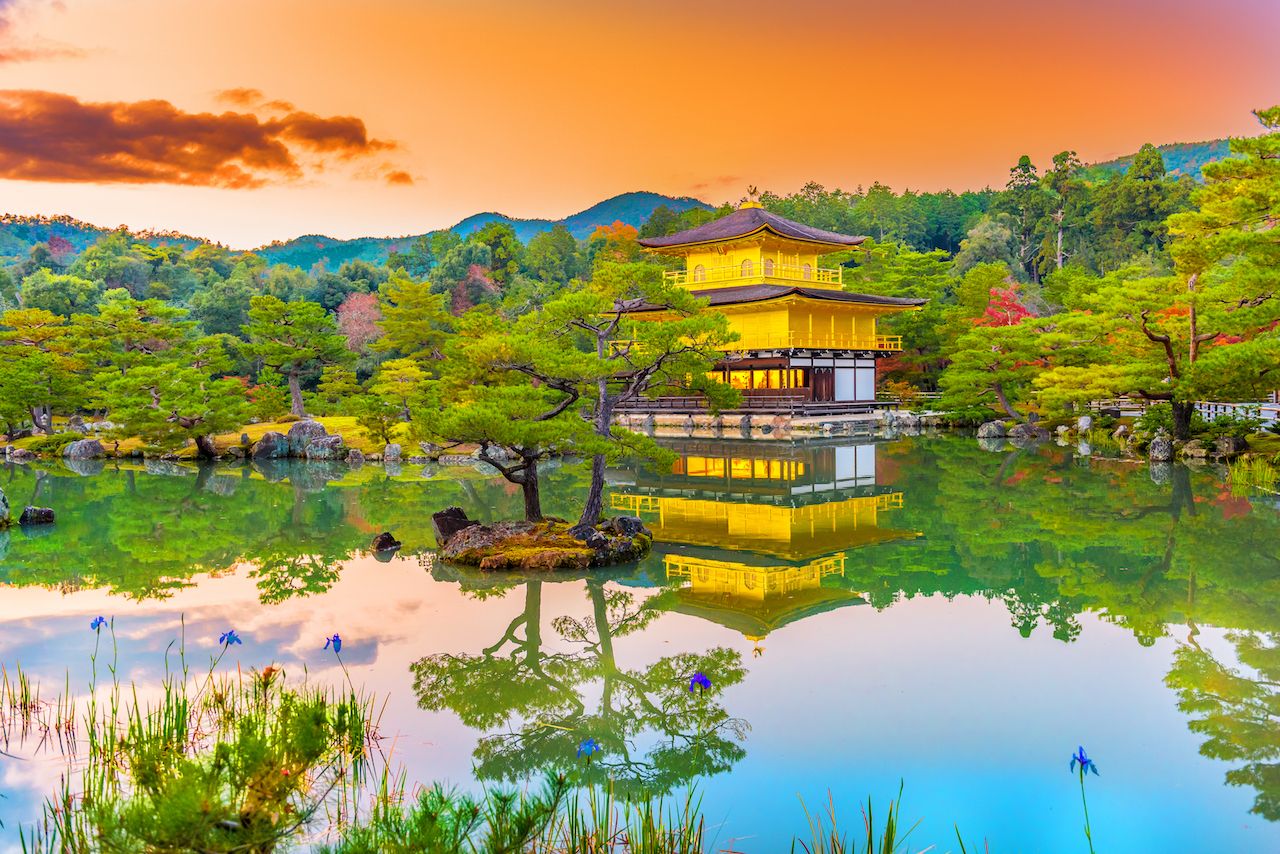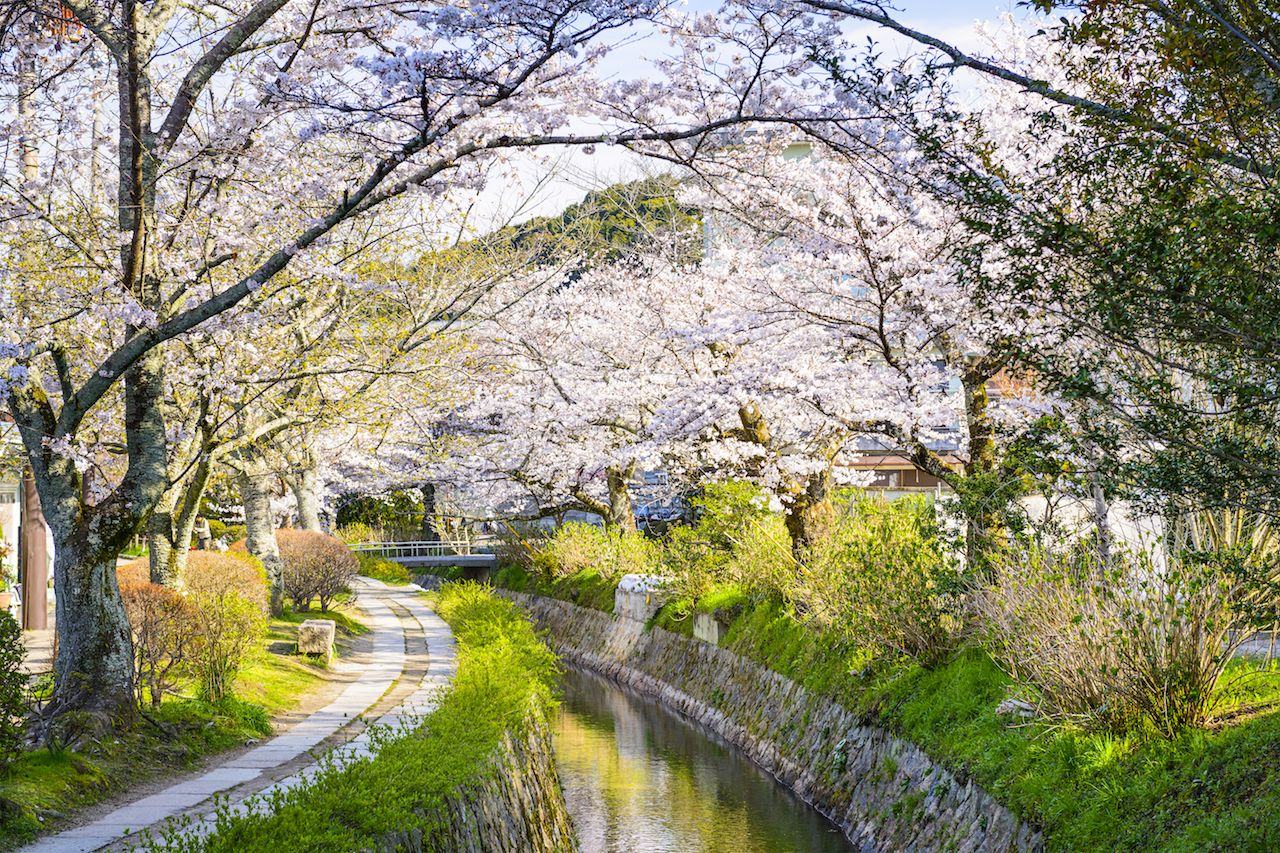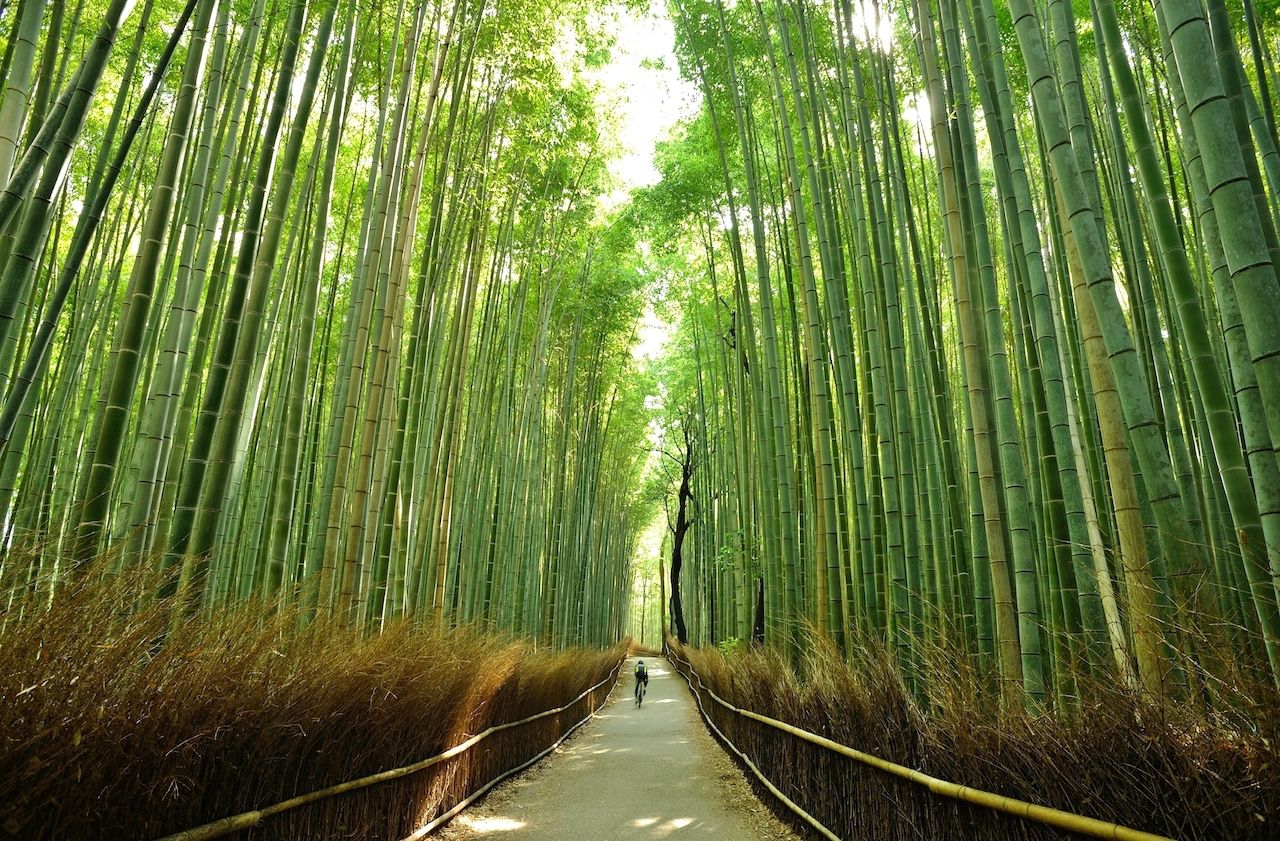Taking the bullet train from Tokyo to Kyoto, you’re probably ready to ditch the bustle of the Japanese capital and experience some Zen serenity in this ancient city. Yet, arriving at Kyoto’s main train station — a busy, modern terminus more like a major airport — you realize you’re still in an urban center. Kyoto, after all, has nearly a million and a half residents, and plenty of high-rise apartment blocks.
However, rent a bike and you’ll quickly be transported to the Kyoto you’ve imagined — the Kyoto of rivers and canals, wooded hills, serene temples, sand gardens, bamboo forests, and cherry trees. Kyoto is without a doubt best explored by bike with accessible routes that aren’t limited to seasoned cyclists. So if you want to see the serene side of Japan without having to shove your way onto public transportation, rent a bike and start exploring.
